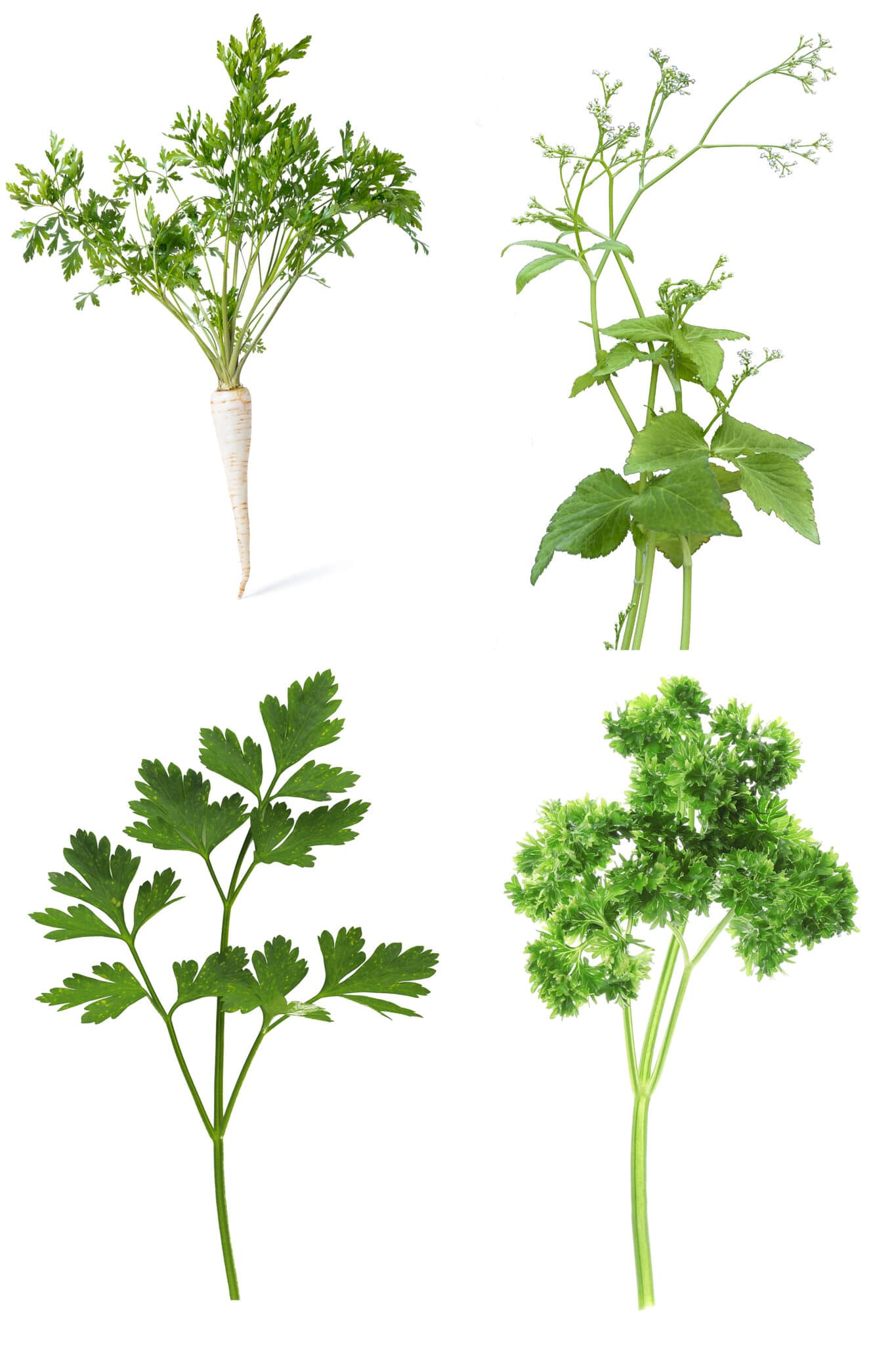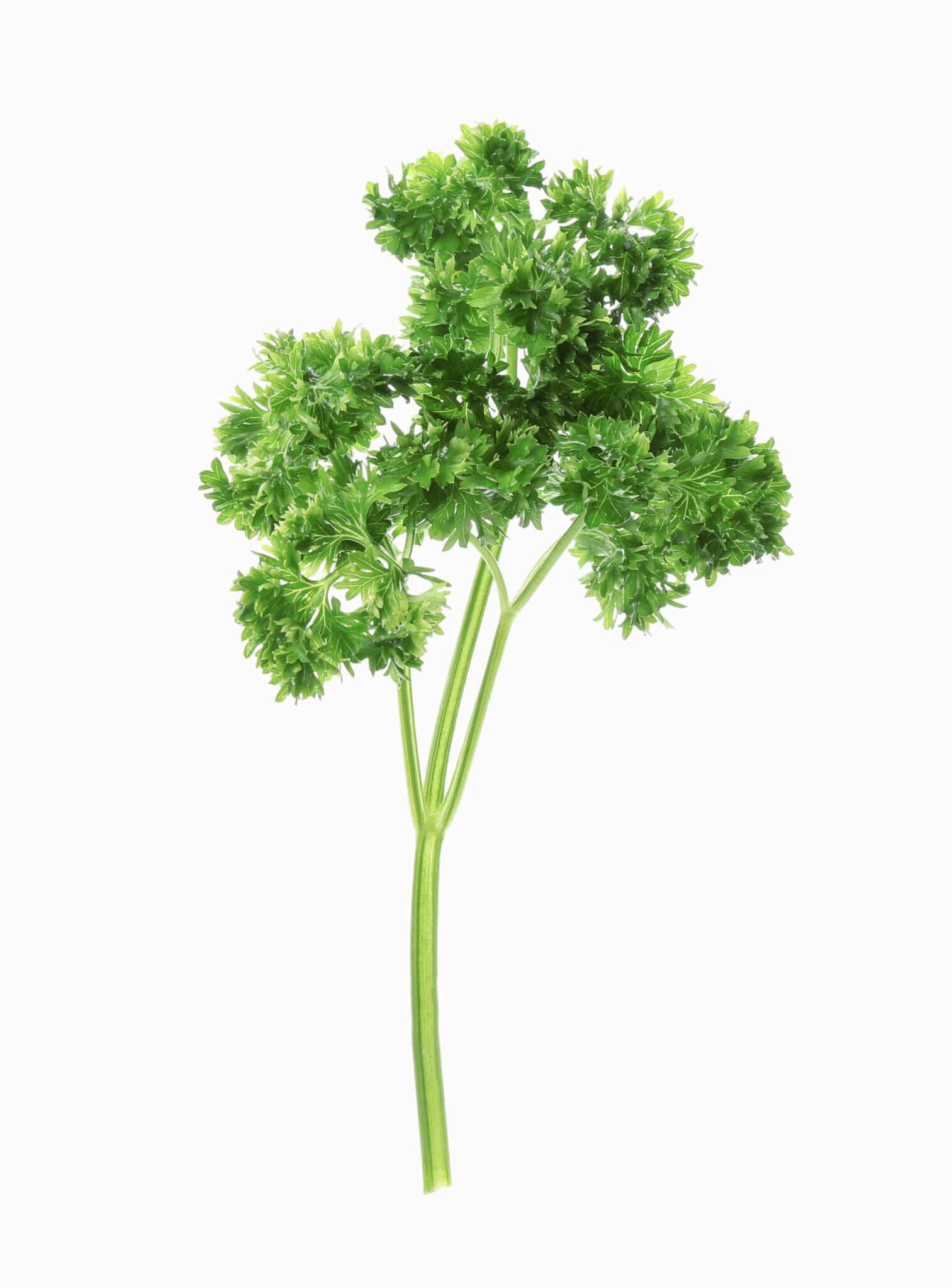Guide On All Types of Parsley
Parsley is used as a mild herb to flavor recipes from all around the world. There are four main types of parsley, and each type has its own flavor and its own uses! Learn about the most common parsley varieties, how to grow them, and how to use them.

Parsley is one of the most commonly used herbs in cooking around the globe. It also happens to be one of my favorite herbs to grow because it makes a beautiful addition to my garden and tastes incredible fresh from the garden.
Once you learn how to grow parsley, it’s time to choose which variety you want to grow!
An easy plant to grow, add parsley plants to your rock garden, outdoor garden, and even your indoor herb garden. This list of the most common parsley varieties contains everything you need to know about each variety to help you choose which one(s) you want in your garden.
Parsley Plant Basics
This popular herb is part of the Apiaceae family, which is in a large family that’s also home to some other well-known members including fennel, cilantro, carrots, and dill. In general, it’s a warm-weather-loving, hardy plant native to the Mediterranean.
Parsley has been used in cooking and medicinal purposes for at least 2,000 years. Its wide range of uses in many different cultures is thanks to its worldwide popularity and ease of growing.
There are four main types of parsley. Learn the differences between them so that you know how to use each one!
4 Different Types Of Parsley To Try Growing
Thanks to its mild flavor and sweet aroma, parsley has quickly become a staple herb in many different cultures all over the world, especially in Europe, the Middle East, and the Americas. It’s chock-full of vitamins and minerals, but it’s probably its low-fuss nature that also had a hand in its blooming popularity!
There are 4 main different parsley varieties: flat-leaf (a.k.a. Italian), curly (a.k.a. common), Japanese, and Hamburg. Each variety is nutritious, flavorful, and aromatic, and they all have different uses in the kitchen.
Why learn about different Types Of parsley?
Why is it worth learning about more than one type of parsley? Isn’t one enough? Nope, not when it comes to parsley. Each variety looks and tastes different from all the others. If you really want to expand your cooking horizons, you have to try more than one variety. 🙂
Here’s your guide to the most common parsley varieties and how to use them.
Flat-Leaf Parsley
Flat-leaf parsley is grown for culinary uses because it has more flavor than curled leaf parsley. They also happen to make terrific additions to your butterfly garden! Cultivars of this parsley variety include Italian Flat Leaf, Gigante Catalogno, and Titan.
- Scientific Name: Petroselinum crispum var. neapolitanum Danert
- Hardiness Zone: 2-11
- Light: Full sun to part shade
- Soil: Well-draining soil
- Water: Keep it moist
How To Identify Flat-Leaf Parsley
Of all types of parsley, this one has flat, green, serrated leaves that grow up to 36 inches tall in a bushy pattern.
How To Grow Flat-Leaf Parsley
Parsley is really very easy to grow and will stay happy as long as you keep it from getting too crowded, too hot, or too dry. Ok, who am I kidding? It’s a bit of a diva but in an easiest-to-grow way.
Ways To Use Flat-Leaf Parsley
Use it in soups, salads, stews, sauces, meat dishes, herbed butter, potatoes, and much more. Plus, don’t forget to top your dishes with a fresh sprig as an after-meal breath mint!

Curly (Common) Parsley
This variety is the most commonly used variety. Use it in cooking and as a garnish. It’s less flavorful than flat-leaf varieties, but that doesn’t mean it isn’t delicious.
Check out these popular cultivars: Forest Green, Extra Curled Dwarf, and Pagoda.
- Scientific Name: Petroselinum crispum neapolitanum
- Hardiness Zone: 2-11
- Light: Full sun (offer afternoon shade in hot climates)
- Soil: Well-draining soil
- Water: Keep it moist
How To Identify Curly Parsley
By its curly, ruffled leaves, of course! The leaves are shiny green, smooth, and divided into pairs on ribbed stems.
How To Grow Curly Parsley
Parsley seeds can be difficult to germinate, so start from seedlings. This type of parsley is less finicky than flat-leaf parsley varieties, but it does need to stay moist.
Ways To Use Curly Parsley
Use it fresh, dried, or frozen for a wide variety of culinary, medicinal, and beauty purposes. If you love the flavor of parsley, there’s almost no end to ways you can use it!

Japanese Parsley
Native to Asia (specifically Japan and China), this herb is an evergreen perennial that’s grown as a vegetable and eaten like celery (but has a bitter flavor). It’s also known by the names Mitsuba, Purple-Leaved Japanese Wild Parsley, and Purple-Leaved Japanese Honewort
- Scientific Name: Cryptotaenia japonica
- Hardiness Zone: 4-7
- Light: Shade
- Soil: Well-draining
- Water: Keep it moist but not soaking wet
How To Identify Japanese Parsley
Japanese parsley grows on tall stems and has green pointy leaves that grow in sets of three.
How To Grow Japanese Parsley
You can grow these types of parsley indoors or in your garden, but also in a container.
Ways To Use Japanese Parsley
The entire plant (from the leaves to the roots) is edible. The leaves are used as a seasoning, and roots are eaten as a vegetable, and the sprouts are tossed into salads.

Hamburg Root Parsley
This parsley variety looks similar to flat-leaf parsley, and its leaves are only ornamental because most people find the flavor to be too strong. However, this variety also grows long, thick tubers that are parsnip-like.
Its common name comes from the area of Germany where it was first thought to be used. However, it’s also known by a few other names including root parsley and Dutch rooted parsley.
- Scientific Name: Petroselinum crispum (Mill.) Fuss
- Hardiness Zone: 5-10
- Light: Full sun
- Soil: Well-draining
- Water: Keep it moist
How To Identify Hamburg Root Parsley
The leaves look very similar to flat-leaf parsley. The tubers are white-ish and can grow up to 8 inches long.
How To Grow Hamburg Root Parsley
Grow this parsley variety in the same way you would grow flat-leaf varieties. Above ground, it will look similar. The main difference is in the roots below ground.
Ways To Use Hamburg Root Parsley
The tubers have a flavor that is a nutty-tasting combination of celery and carrot. Although Hamburg Root parsley can be eaten raw (similar to a carrot), it’s often cooked and tossed into soups and stews.
If you enjoy the look and taste of parsley in your cooking, I hope you’ll try growing it yourself! There are several varieties to choose from, but you can’t go wrong with any of them. No matter which of the types of parsley you plant, you’ll love having some fresh specimens at your scissor tips anytime you want it!

More Gardening Inspiration
- Bay Leaf Plant: How To Grow, Harvest & Use Them
- Dill Plants: How To Grow, Harvest & Use Them
- How Weeds Grow: The Ultimate Care and Prevention Guide
- Thyme Plants: How To Grow, Harvest & Use Them
- Rosemary Plants: How To Grow, Harvest & Use Them




